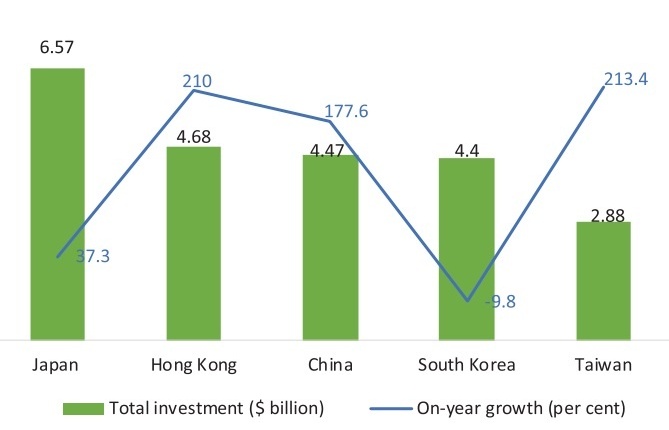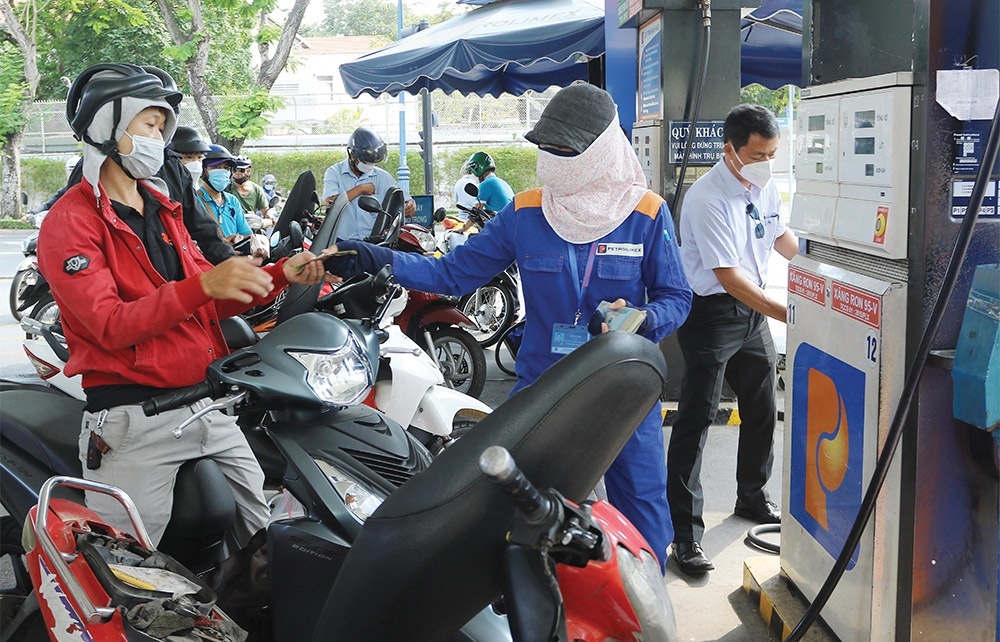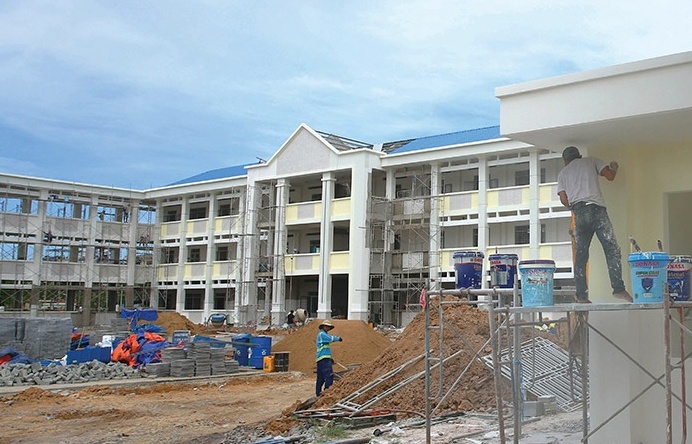Firms’ SOS to spark big rescue

Many SMEs are struggling to access funds to stay alive
"These measures could have saved my firm if they were applied last year.”- Nguyen Tao Chuyen
Director of Hanoi-based NTC Vietnam Joint Stock Company
Nguyen Tao Chuyen displayed a cool attitude to news that small- and medium-sized enterprises (SMEs) like his would be supported by a major government bailout package.
Chuyen, director of Hanoi-based NTC Vietnam Joint Stock Company - trading in wood, vegetable and fruit products, in March shut down his last processing workshop. “We have no output market and no capital, while the lending rate remains high,” he said.
The plight of Chuyen’s company is shared by Nhat Anh Joint Stock Company owned by Nguyen Ngoc Thuyen, Chuyen’s younger brother. Nhat Anh, which produced tissue-paper, shut down in February.
While the two directors share the same predicament, neither thought the government’s package would come to much. Chuyen said it was a case of too little, too late: “These measures could have saved my firm if they were applied late last year.”
A dark reality
These two companies are among 5,310 enterprises in Hanoi having gone bankrupt or stopped operations due to economic woes in this year’s first quarter, up 87 per cent against the same period last year, the Hanoi Department of Tax reported.
Minister of Planning and Investment Bui Quang Vinh said economic stagnancy danger signs, such as high inventory levels, rising unemployment and negative credit growth were now visible.
The government last week took action to help ease domestic enterprises’ financial woes. The bailout package, worth VND29 trillion (nearly $1.4 billion) according to the Ministry of Finance’s (MoF) calculations, includes tax relief mixed with expanded public spending, price management measures and cuts in administrative procedures.
Specifically, the package is headlined by a 30 per cent reduction of enterprises’ corporate income tax (CIT) in 2012 for labour-intensive enterprises in the agricultural, textile and garment, and footwear sectors, amounting to a VND4.05 trillion ($195 million) cushion for firms.
The package also covers a six-month payment delay for the value added tax (VAT), valued at VND12.3 trillion ($591 million) for these types of enterprises and a nine-month delay for the CIT worth VND3.5 trillion ($168 million) for cement, steel and transport enterprises who have yet to pay CIT for 2011 or earlier periods.
Moreover, public spending solutions worth VND5.66 trillion ($272.5 million) and road-maintenance fee collection delays worth VND3.2 trillion ($154 million) are in the mix. Enterprises operating in the commercial and service sectors could have land rental payments delayed by up to 12 months.
However, the MoF will have to seek National Assembly approval for the proposed 30 per cent reduction in CIT in 2012, as it requires amendments to the Law on Corporate Income Tax.
Prime Minister Nguyen Tan Dung required the ministries of Finance, Industry and Trade, Agriculture and Rural Development, Planning and Investment (MPI), and the State Bank to execute this resolution.
“We want to help enterprises have more capital for production, address high inventories and ensure big markets for products,” said Vu Nhu Thang, head of the MoF’s National Institute for Finance, who helped draw up the package.
Move off target
Vietnam Association of Accountants and Auditors chairman Dang Van Thanh said the CIT reduction could be useless for many enterprises as they had no income to pay CIT.
The same was true for VAT payment delays, because enterprises already suffered from output market shortages and high inventories. “If enterprises cannot sell products, the VAT payment delay is meaningless,” said Ta Phuoc Dat, deputy general director of Saigon General Service Corporation.
Pham Thi Lan Huong, head of the Central Institute for Economic Management’s (CIEM) Macroeconomic Policy Committee, said CIT payments needed to be reduced more sharply rather than delayed, because enterprises would have to pay bank interest to pay CIT.
“Moreover, the CIT delay worth $168.2 million is too small as compared to the VAT delay worth $591 million. Meanwhile, many enterprises have no income to pay the CIT. Thus, the CIT delay will not be able to produce big results,” she said.
However, Vietnam Steel Association chairman Pham Chi Cuong saw the package as good news.
“The package with more public spending will result in an increase in the demand for steel in Vietnam. At present, local steel manufacturers have been unable to sell their inventories, which is 20 per cent higher year-on-year,” Cuong said.
Le Quang Hung, chairman of Saigon Garment Manufacturing Company, said the CIT delay would help his company save about $48,000 each quarter. “If we don’t have to pay VAT soon, we will have an additional $963,000 for production within six months.
Not all smelling of roses
Vietnam Chamber of Commerce and Industry (VCCI) chairman Vu Tien Loc, however, offered some words of caution. He said though the package was helpful to enterprises, the government needed to closely control rising input costs like electricity, power and coal. Also, lowering of lending rates needed to continue.
Last week, the State Bank’s Circular 14/2012/TT-NHNN on lowering the lending interest rate took effect. Under which, the highest lending rate for four prioritised sectors including agricultural and rural development, export, supporting industry and SMEs are no higher than 15 per cent, per year.
The prime minister said the government’s first monetary policy priority was “to lower lending rates and facilitate enterprises’ access to bank loans.”
But Chuyen and Thuyen said the 15 per cent lending rate remained high and access to credit was narrow due to complicated lending procedures. They said the government’s most important bailout solution now was reducing taxes to help consumers benefit from cheaper-price products, and then enterprises would be able to sell off their inventories faster.
Figures hit home
The MPI in early May said the first four months of 2012 saw nearly 18,000 enterprises go bankrupt or stopped operations, up 9.5 per cent against the same period last year. Many of them are in wholesale and retail (5,300 enterprises), construction (3,100 enterprises), manufacturing and processing (2,900 enterprises) and transport (1,000 enterprises).
HSBC Vietnam last week issued its Manufacturing Purchasing Managers’ IndexTM (PMITM) survey conducted in April, 2012 over 400 Vietnam-based manufacturing companies. The MPI reported the inventory level in Vietnam in this year’s first four months grew by 35 per cent year-on-year, far higher than the 14.6 per cent year-on-year of last year’s same period.
Meanwhile, the industrial production index rose only 4.3 per cent year-on-year in this year’s first four months against the corresponding periods of last year (7.9 per cent) and 2009 (10 per cent).
What the stars mean:
★ Poor ★ ★ Promising ★★★ Good ★★★★ Very good ★★★★★ Exceptional
 Tag:
Tag:
Related Contents
Latest News
More News
- Planning for 30 airports to complete by 2025 (April 15, 2024 | 16:56)
- MPI calls for high-tech, green energy cooperation from Washington investors (April 10, 2024 | 15:33)
- Vietnam's economic growth expected to pick up in 2024 (April 09, 2024 | 15:16)
- European business confidence at highest since 2022 (April 08, 2024 | 09:55)
- Where is environmental governance in FDI attraction? (April 08, 2024 | 09:45)
- 2024 is expected to see fiercer competition in FMCG (April 04, 2024 | 16:53)
- Vietnamese startups bag $35.7 million in first quarter of 2024 (April 02, 2024 | 16:40)
- Investors increasingly optimistic about manufacturing sector (April 01, 2024 | 14:51)
- Soaring German investments are testament to trust in Vietnam (April 01, 2024 | 09:52)
- Prime Minister works with Japan Business Federation (March 29, 2024 | 08:00)






















 Mobile Version
Mobile Version